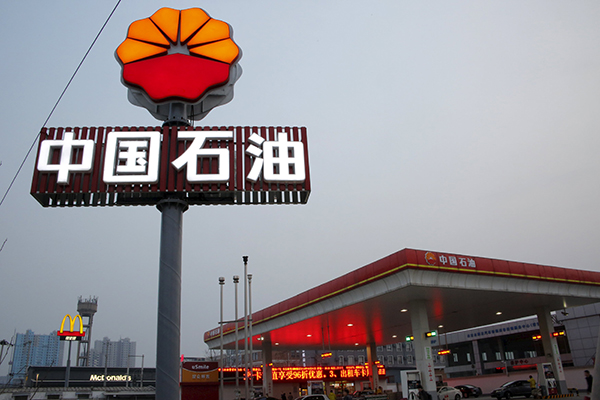Preparing for possible rise in oil prices
By LIN BOQIANG (China Daily) Updated: 2016-05-07 09:24
 |
|
PetroChina's petrol station is pictured in Beijing, China, March 21, 2016. [Photo/Agencies] |
Major crude producers, members as well as non-members of the Organization of Petroleum Exporting Countries met in Doha on April 17 to reach an agreement to freeze production but failed to do so. Although crude producers affected by low oil prices are eager to restrict production, countries such as Saudi Arabia and Iran seem unwilling to do that.
Freezing production means crude producers maintaining the current output rate to offset the negative impact of low prices. A free-output deal, however, may affect global petroleum prices in the short term, not in the longer term-as supply and demand in the world market will not change much because of that.
The oversupply of oil worldwide is the main reason of the low prices, and demand for oil is not expected to change in the short term because of the gloomy global economy. Besides, major crude producers are unlikely to restrict output. No country is willing to freeze its oil output unilaterally for fear of losing its market share and thus suffering further losses. For example, Saudi Arabia says it will not restrict its output unless all other crude producers do so.
The existing situation made Iran crucial to a freeze-production agreement in Doha. After Western countries lifted sanctions on Iran, it has increased its oil output to regain its share in the global market, the Asian market in particular. Currently, Iran produces 3 million barrels of oil a day and plans to increase it to 4 million barrels. If Iran goes ahead with its output expansion, Saudi Arabia will increase its output accordingly to keep its market share.
Since market share is as important as price for oil producers, oil exporting countries will freeze output only if it helps them maintain their incomes from exports.
China's oil consumption accounts for 11 to 12 percent of the global total. Last year, China imported a record 340 million tons of crude oil. But the overall value of China's oil imports was 833.28 billion yuan ($128.72 billion), 40.5 percent less than that of the year before.
As the biggest oil importer, China is the biggest beneficiary of low oil prices. Some analysts even estimate that billions of yuan could be saved by the country if prices plunge fast.
If, for a moment, we forget geopolitics, the failure of crude producing countries to reach a freeze-output deal in Doha should be good news for China. But the low oil prices are a nightmare for crude producers. Venezuela and Angola are already suffering from a fiscal crisis. If low oil prices continue, other countries could go the same way.
And fiscal crises in oil-producing countries, especially those in the Middle East, could lead to political crises, which, ironically, could lead to a rebound in oil prices.
But even if there is no geopolitical crisis, the supply and demand of oil will reach a new balance over time. Low prices squeeze the space for the quest for greener sources of fuel, which involves high cost, and further impede the technological progress toward clean energy.
As the major producer of unconventional fuel, the US has already reduced its oil output to less than 9 million barrels a day-compared with 9.7 million barrels a day in April 2015. In fact, the US is expected to further reduce its oil production this year.
China should be prepared to cope with possible change in the oil market.
The author is the president of China Institute for Studies in Energy Policy at Xiamen University, Fujian province.

I’ve lived in China for quite a considerable time including my graduate school years, travelled and worked in a few cities and still choose my destination taking into consideration the density of smog or PM2.5 particulate matter in the region.











